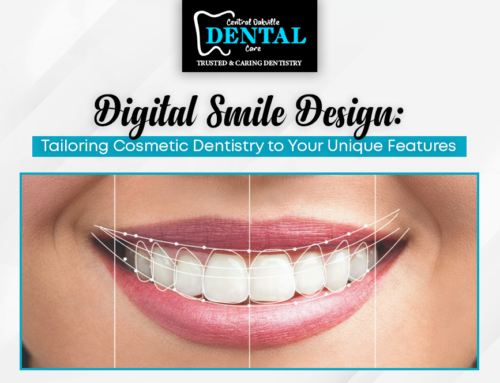Introduction
Biomimetic dentistry, inspired by nature's design principles, is gaining momentum as a patient-centered approach focused on preserving natural tooth structure, enhancing longevity, and promoting optimal oral health. By emulating the biomechanical and structural properties of natural teeth, biomimetic techniques aim to restore form, function, and aesthetics while minimizing the need for invasive treatments. Let's explore the principles and benefits of biomimetic dentistry:
Conservative Treatment Strategies:
Central to biomimetic dentistry is the philosophy of minimally invasive treatment, which emphasizes the preservation of healthy tooth structure and the avoidance of unnecessary removal of enamel and dentin. Unlike traditional restorative approaches that rely on extensive tooth preparation and large restorations, biomimetic techniques prioritize conservative treatments that mimic the natural biomechanics and function of teeth.
Through adhesive bonding and layering techniques, biomimetic restorations aim to seal and reinforce weakened tooth structures, restoring strength and function while preventing further damage or decay. By preserving more of the natural tooth, biomimetic dentistry reduces the risk of complications, such as fracture or sensitivity, and promotes long-term oral health.
Functional and Aesthetic Restoration:
Biomimetic restorations are designed to closely resemble the natural anatomy, color, and translucency of teeth, achieving seamless integration and harmony within the oral environment. By using advanced materials and techniques, biomimetic dentistry enables dentists to create restorations that mimic the optical properties and surface textures of natural enamel, resulting in lifelike and aesthetically pleasing outcomes.
Furthermore, biomimetic restorations restore the biomechanical function and integrity of teeth, allowing for normal chewing, speech, and oral function. Whether repairing small cavities, fractured cusps, or worn enamel, biomimetic techniques prioritize functional restoration while preserving the natural contours and occlusal relationships of the dentition.
Incorporating bioactive materials into biomimetic restorations promotes natural healing processes and remineralization of tooth structure, enhancing the overall health and resilience of the dentition. Bioactive materials, such as glass ionomers, bioactive composites, and calcium-phosphate-based cements, release ions that stimulate remineralization, neutralize acids, and inhibit bacterial growth within the restoration interface.
These bioactive properties help protect the surrounding tooth structure from demineralization and secondary decay while promoting the formation of a stable and biocompatible interface between the restoration and tooth. By harnessing the regenerative potential of bioactive materials, biomimetic dentistry supports the natural repair mechanisms of teeth, leading to improved oral health outcomes and longevity of restorations.
Patient-Centered Approach and Long-Term Benefits:
Biomimetic dentistry prioritizes patient-centered care by offering conservative, aesthetic, and functional solutions that align with patients' goals, preferences, and oral health needs. By preserving natural tooth structure and promoting oral health, biomimetic techniques reduce the need for extensive interventions, repetitive treatments, and costly procedures over time.
Furthermore, biomimetic restorations exhibit greater resilience and longevity compared to traditional restorative materials, minimizing the need for replacements or repairs in the future. By focusing on preventive measures, patient education, and minimally invasive interventions, biomimetic dentistry offers sustainable solutions that benefit patients' oral health and well-being in the long run.
Conclusion:
In conclusion, biomimetic dentistry represents a paradigm shift towards more conservative, patient- centered, and sustainable approaches to restorative and preventive care. By mimicking nature's design principles and leveraging advanced materials and techniques, biomimetic dentistry offers functional, aesthetic, and long-lasting solutions that promote optimal oral health and preserve the natural beauty of the smile. As awareness and adoption of biomimetic techniques continue to grow, the future of dentistry holds exciting possibilities for enhancing treatment outcomes, improving patient experiences, and transforming the standard of care.
Enhanced Bonding and Adhesion:
Biomimetic dentistry relies on adhesive bonding principles to achieve durable and long-lasting restorations that bond seamlessly to tooth structure. Advances in adhesive technology and bonding agents allow for strong and stable bonds between restorative materials and enamel or dentin, reducing the risk of microleakage, recurrent decay, and restoration failure.
By bonding restorations to the tooth surface, biomimetic techniques create a monolithic structure that distributes occlusal forces more evenly, minimizing stress concentrations and reducing the likelihood of fractures or debonding. Enhanced bonding and adhesion contribute to the longevity and reliability of biomimetic restorations, ensuring optimal performance and durability over time.
Bioactive Materials for Healing and Remineralization:
Incorporating bioactive materials into biomimetic restorations promotes natural healing processes and remineralization of tooth structure, enhancing the overall health and resilience of the dentition. Bioactive materials, such as glass ionomers, bioactive composites, and calcium-phosphate-based cements, release ions that stimulate remineralization, neutralize acids, and inhibit bacterial growth within the restoration interface.
These bioactive properties help protect the surrounding tooth structure from demineralization and secondary decay while promoting the formation of a stable and biocompatible interface between the restoration and tooth. By harnessing the regenerative potential of bioactive materials, biomimetic dentistry supports the natural repair mechanisms of teeth, leading to improved oral health outcomes and longevity of restorations.
Patient-Centered Approach and Long-Term Benefits:
Biomimetic dentistry prioritizes patient-centered care by offering conservative, aesthetic, and functional solutions that align with patients' goals, preferences, and oral health needs. By preserving natural tooth structure and promoting oral health, biomimetic techniques reduce the need for extensive interventions, repetitive treatments, and costly procedures over time.
Furthermore, biomimetic restorations exhibit greater resilience and longevity compared to traditional restorative materials, minimizing the need for replacements or repairs in the future. By focusing on preventive measures, patient education, and minimally invasive interventions, biomimetic dentistry offers sustainable solutions that benefit patients' oral health and well-being in the long run.
Conclusion:
In conclusion, biomimetic dentistry represents a paradigm shift towards more conservative, patient- centered, and sustainable approaches to restorative and preventive care. By mimicking nature's design principles and leveraging advanced materials and techniques, biomimetic dentistry offers functional, aesthetic, and long-lasting solutions that promote optimal oral health and preserve the natural beauty of the smile. As awareness and adoption of biomimetic techniques continue to grow, the future of dentistry holds exciting possibilities for enhancing treatment outcomes, improving patient experiences, and transforming the standard of care.





